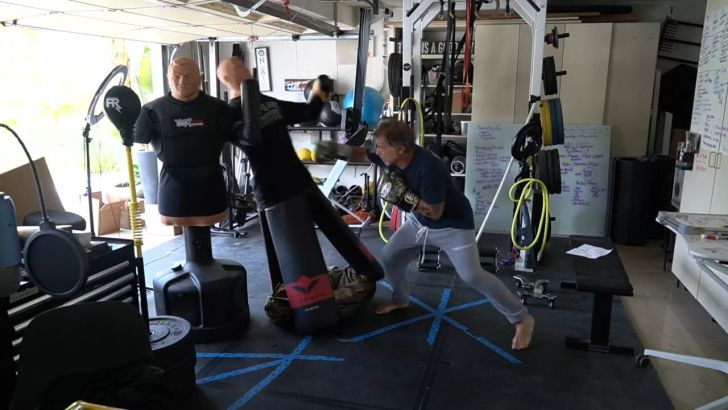What if you could instantly improve your speed, timing, and explosiveness in a fight?
Over 30 years ago, I discovered a simple way to develop faster, more reactive movement—whether for sparring, sport, or self-defense.
I got my students to think of speed as three interdependent concepts:
✔ Raw Speed – Your natural speed. Basically, how fast you are—raw. You can modify this slightly with sprints, diet, etc., but some of us have more fast-twitch fibers than others– that's just life.
✔ Quickness – I call this your “demo speed”—basically, how fast you can move through a complex motor skill you’ve learned. Punch, kick, block, sprawl, draw, move, etc.
✔ Suddenness – Now, this is the only zone that matters. When it counts, how fast can you move in response to an unexpected stimulus?
Pro tip: Only your suddenness quotient matters. Because that’s what counts in a real scenario.
There are tons of flashy Instagram experts demoing super intricate and fast movements, but if you look closely, you’ll notice the attacker isn’t really attacking—that’s not real life.
Everything works in a demo.
For personal safety, the real question is: How effectively can you move when the stimulus is a surprise?
If you break down your training and think about your skills through the lens of quickness and suddenness, it’ll be easier to absorb, develop, and apply under pressure.
Another major factor in my own speed and explosiveness is visualization (which I break down in today’s video below).
Over the years, I reverse-engineered drills based on real-world movement. I visualized how a real threat would force me to react, then studied and refined the most natural and efficient ways to move.
Key takeaway: The bad guy controls the fight.
When I first started sharing this in 1993 with my law enforcement audience, there was pushback—they didn’t like it. They had been taught that they need to control the fight.
I politely argued: You need to survive and win the fight—but it’s the opponent who dictates the location, the level of violence, and the duration of the fight.
Your training must reflect that. And that’s where visualization comes in.
Remember: Nothing needs to happen if there’s no one threatening your safety. That’s another example of why studying scenarios is so important.
If you aren’t mentally rehearsing the fight before it happens, you’re always going to be reacting late. Nothing happens until something happens—and if you don’t train your brain to recognize sudden threats, your body won’t move suddenly!
Train for suddenness.
Watch the video below, try the drills, and tell me: What clicked for you?
Stay safe,
Coach B
PS: There’s also a must-try drill in today’s video using a PVC pipe—IMO everyone should be doing it!
Three Ways to Train With Me
✅ Elite Retreat – 1 spot OPEN for March 21-23! Accepting applications for the June 6-8 event. [Details here]
✅ Scenario-Based Training for Your School – Host cutting-edge Evidence-Based Scenario Training at your martial arts or self-defense school. Next course: March 29-30 in New Jersey. Use the Battle Buddy option to save $2,000! [Details here]
✅ Tactical Garage Gym – The ultimate resource for both black belts and beginners looking to sharpen their skills. [Join here] New members: Take 50% off to get started. Use code TGG50



